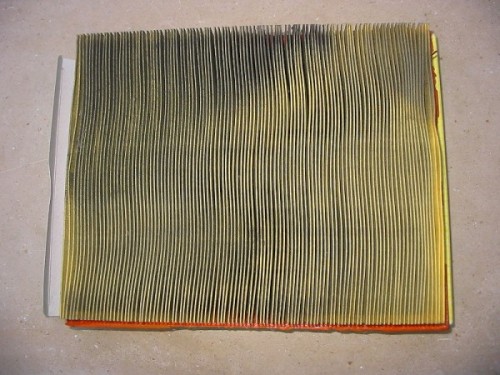Breathing is something that most people take for granted until they have a problem. Breathing is as important to the functioning of a vehicle as it is to a human being. Unfortunately, there is a similar attitude towards the breathing of a vehicle as there are to ourselves. There is little notice taken of the necessity of breathing until there is a problem. Failing to keep the air supply to your engine clean and free from restrictions can have tragic results.
Functions of the Air Filter
If you can understand the function of an air filter, then you can identify when it is failing. The air filter is a product designed to allow clean air to flow freely to the intake manifold of the engine. The air flows from the intake manifold into the chamber of the cylinder (excluding systems with air to air assemblies and turbo driven pressurized air systems). The air is one of the three necessary supply items that allow an explosion to occur in the cylinder.
Air, fuel, and spark are perfectly timed in their delivery to the chamber and the explosion forces the piston down and the subsequent rotation of the crank. As you can see, air reaches the innermost heart of your engine.
The air filter is made of material that allows particles of air to pass through while restricting debris. If you remove your air filter and inspect it, you will realize very quickly that it is a very small item when you consider how much air passes through it. Air can be moist when it rains, dusty when it is dry, salty by the ocean, or dirty from the road. All of these are hazards for the internal parts of your engine, and the filter has to protect the engine from them all.
Indicators That The Filter Needs to be Replaced
Identifying a problem with your air filter may be challenging. The damage to an air filter can be subtle and happens over time. When you cannot personally breathe, you feel lethargic and tired. Your car reacts in a very similar way as it loses power and burns more fuel to do less work. The restricted air does not allow the combustion in the cylinder to be as forceful, and that directly translates into a sluggish motor.
The response time to the acceleration of the gas pedal is retarded, and the car may take more revolutions of the motor to get it running. Eventually, the car will not start at all.
If you notice a change in your vehicles fuel mileage, you should check your air filter. The loss of power is another indicator. Another way to identify an air filter problem is to look at your exhaust. If the exhaust is colored black, it means there is too much fuel and not enough air. Only a restriction in the air flow, a problem in the fuel delivery system, or defective timing can result in black smoke out of the exhaust pipe.
In addition to black smoke, use your nose to identify excessively burnt fuel smells in the exhaust. You do not have to put your nose next to the exhaust pipe; the smell should be obvious.
Inspecting the Air Filter
Air filters are not always easy items to remove, but they are most of the time. The recommended practice is to refer to the owner manual for your particular model and follow the instructions carefully. Once you have removed the air filter, there are several things to look for.
The first item on your list of checks is to identify the presence of excessive debris. Debris may be in the form of leaves, garbage, or any other items that restrict the flow of air in the chamber. It is vital that after you remove the filter that you inspect the reservoir for any debris that could travel into the intake and the motor. Remove all items that do not belong. Make sure to inspect the housing for any cracks between the filter housing and the intake.
Any cracks will allow air to enter the engine without first passing through the filter causing severe damage. Replace any broken items with original factory parts or comparable aftermarket products.
If there is no presence of any debris, check the filter itself. If you live in an area where it rains a lot or that has heavily salted air, your filter may be damaged. Damage will not be in the form of rips or tears necessarily. It may simply be a hardening of the filter material itself. The filter material is pliable and flexes when air pressure is applied. If you have an air compressor and a blow gun, try to clean the filter by applying air pressure from the inside out.
If there is no apparent give to the coiled filter paper than the likelihood of needing a replacement is very high. If your filter is black from road dirt or dust, it is best to replace the filter. They are inexpensive and put your motor in the best position to be successful over a longer period.
All of these troubleshooting inspections and observations are necessary if you are having car problems. Having car problems due to a bad filter can be avoided. Air filters should be changed every second oil change at least. If you change your oil every five thousand miles, then you should change your air filter every ten thousand miles. It may be difficult to remember when you last changed your air filter.
One method of tracking the air filter usage is to write the mileage on the air filter housing at the time you change it along with the date of the change. If you keep on top of your maintenance schedule, you should never experience a problem resulting from a bad air filter.
The writer, Ray Donato, would describe himself as something of a motorhead. He knows a lot about cars, and during his free time can often be found elbow deep in his car performing some kind of maintenance. However, when special equipment is called for, that is when he turns to experts such as those found at linearautomotive.com. If you wish to learn more about Ray you can visit on Google+.
















